Written by Leslie Ovalle\Staff Writer
John Bailly gets around the city in a way that is far from the typical Miamian commute: biking.
Bailly, a professor at the University’s Honors College who teaches three study abroad programs in Europe every summer, started biking five years ago — after his European travels, in which he experienced old cities, like ninth Century-Bruges, that have smoothly adapted biking as an alternative mode of transportation.
To him, it’s distressing that Miami hasn’t been able to adapt.
“I-95 destroyed downtown and we continue to fund these policies of superhighways that ruin our city and create so much pollution noise,” said Bailly.
Now, the Department of Parking and Transportation partnered up with the Office of Sustainability to paint sharrows, a pavement marking that reminds motorists that the lane is shared with cyclists, around campus and build bike lanes on expanding roads.
To someone like Bailly, who bikes 24 miles to and from the University, this is a big help.
“Human interaction is a huge part of the adventure [when I’m biking],” he said. “One thing that’s really cool is the wildlife… I’ve encountered iguanas, vultures and manatees on my average day-to-day.”
He said he notices speeding cars and raged drivers during his average trips to and from the University.
“Speed limit is not helpful,” said Bailly. “In a car, 25 miles per hour may seem slow, but, when you’re on a bike, the speed limit is a matter of life and death.”
The University has recently implemented a number of policies and strategies to ease cyclers and promote their safety, in response to alternative transportation increase and demand.
One of the policies the University has on campus is a 15 MPH speed limit and a five MPH parking garage speed limit.
Many reports, such as one published by U.S. Public Interest Research Group late last year, found that young American’s transportation choices are changing.
The report states that “young Americans drive less than older Americans and use public transportation more,” as well as often using “multiple modes of travel during a typical day or week.”
“The real piece is getting to campus — bike lanes in the surrounding community, that’s the infrastructure that’s gonna help drive that kind of usage,” said Thomas Hartley, executive parking director in the Department of Parking and Transportation.
According to him, a bike committee was established to develop initiatives and policies that will ease cyclers’ movement on campus.
The University also houses an in-campus Bike Shop — which began as a student project with Adrian Valella, current Bike Shop manager, and his friend. The two would volunteer at the Wednesday farmer’s market and repair bikes for free.
Later, the school offered them a location, and, today, the bike shop is up and running as the “cheapest bike shop in Miami,” providing services with special prices for students, retail items and Do It Yourself classes.
Valella emphasizes that bikes are not a thing of the past, but of the future. He said that he has noticed a significant increase in bike users since 2012, when the shop first opened.
“Before the bike shop there were many abandoned bikes on campus because the students didn’t have a bike shop to repair them, so they would just be left behind,” said Valella.
“As we see more and more [bike usage] we will definitely step up the plate,” said Hartley.
“We’ve got nothing to lose but our chains,” reads a vintage picture of women cyclists wearing doctor coats taped to the bike shop door.
“Being connected to something that’s not electronic, you see this different world,” said Bailly, “I have so much human interaction and get to cherish our natural world — not only from a conservation point of view, but just out of pure beauty.”
-news@fiusm.com
Photo Courtesy of Leslie Ovalle



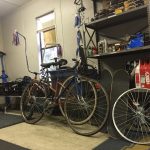
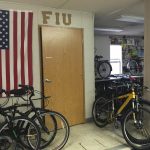

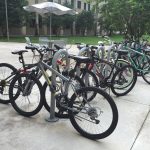
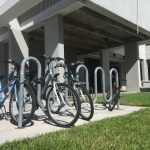
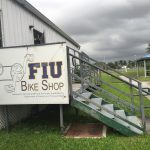





Be the first to comment on "University embraces millennial trend"